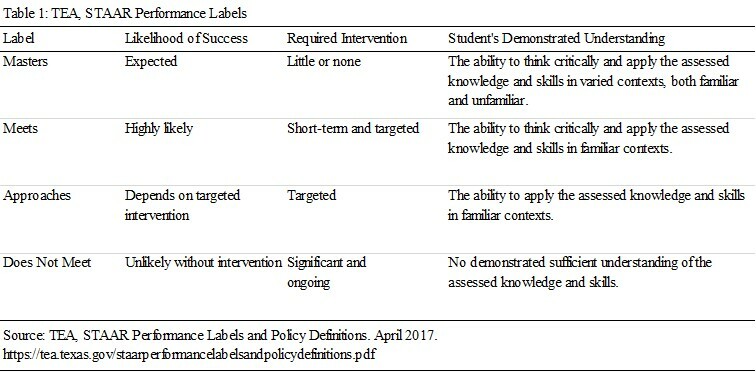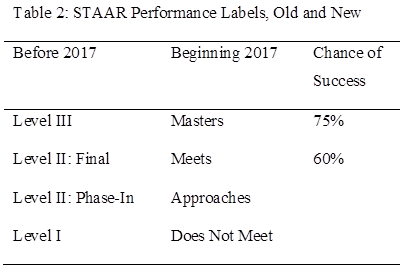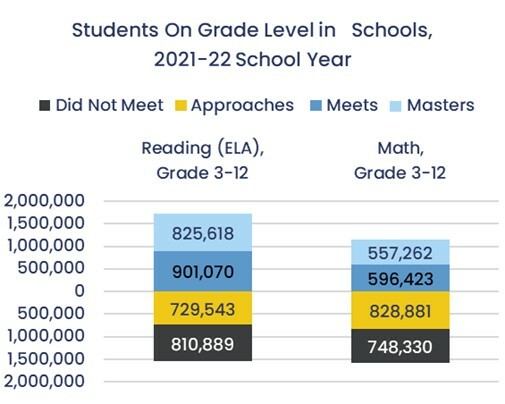Introduction: STAAR performance labels offer helpful information to parents and policymakers because they indicate students’ success and are also an early-warning sign that students need more support.
The STAAR performance labels are: Masters, Meets, Approaches, Does Not Meet. Each label offers an indication of how a child is performing in three categories: a child’s likelihood of success, the level of intervention required by educators, and the child’s degree of understanding. These were the three categories used by the original drafters of the performance labels in 2010.

Students On-Grade Level: As the graph shows, 47% of Texas students were below grade level in reading and 58% were below grade level in Mathematics in the 2021-22 school year. This graph has given rise to the question: what is Approaches, exactly? Is it on or below grade level?
The current performance labels were adopted in 2017 to improve transparency. Table 2 indicates how the current performance labels align with previous ones.

Some of the information in the previous performance labels—especially in Level II—was shared with school leaders, but not parents. In addition, the Level II: Phase-In was problematic and revised for this reason, as TEA explained at the time:
“Several years ago, a phase-in plan was developed for the STAAR test, with what was to be a temporary performance level called Satisfactory. Students who reach this level of performance are not yet on grade level, but they are relatively close…. As a result, the old term ‘Phase In Level II: Satisfactory’ has been replaced by the new term of ‘Approaches Grade Level.’”
Similarly, the 2010 discussions regarding the Level II: Phase-In performance label recommended that this level: “Avoid communicating that a student had ‘met’ the standard for Level II because it is difficult to motivate the student to do better if he or she has already ‘met’ the passing requirement.”

College Ready? For those who want to do a deeper dive into the performance label transition, we recommend looking back at the 2014 district court school finance ruling, in which the judge observed that only the Level III / Masters standard indicated college-readiness. The Court argued that students achieving anything less (i.e. Meets) were not actually college-ready. According to the district court, we are in dire straits indeed.
Retain or Remediate? Whether one follows the district court or not, it is clear that the bar graph which shows Approaches as below grade level is accurate. In practice however, school systems pass and promote students in the Approaches category. These children are socially promoted even though they are below grade level. In general, the legislature favored retention and remediation between 1984 and 2021. (HB 72 (68 2CS), TEC 21.721; SB 1 (74 RS), TEC 28.021(a); SB 4 (76 RS), TEC 28.0211(a), (e)) But Social promotion and remediation are the state’s current approach to students who are below grade level. (HB 4545 (87 RS), TEC 28.0211(a), (e)) The legislature does provide an option for parents who wish to retain children in a grade at their discretion. (SB 1697 (2021); HB 3803 (2023))
Conclusion: About half of Texas children are reading below grade level; about 60% are doing math below grade level, and the majority of students who are below grade level do not catch up. Our children are not prepared for success and this should serve as a warning sign that moves us to action.